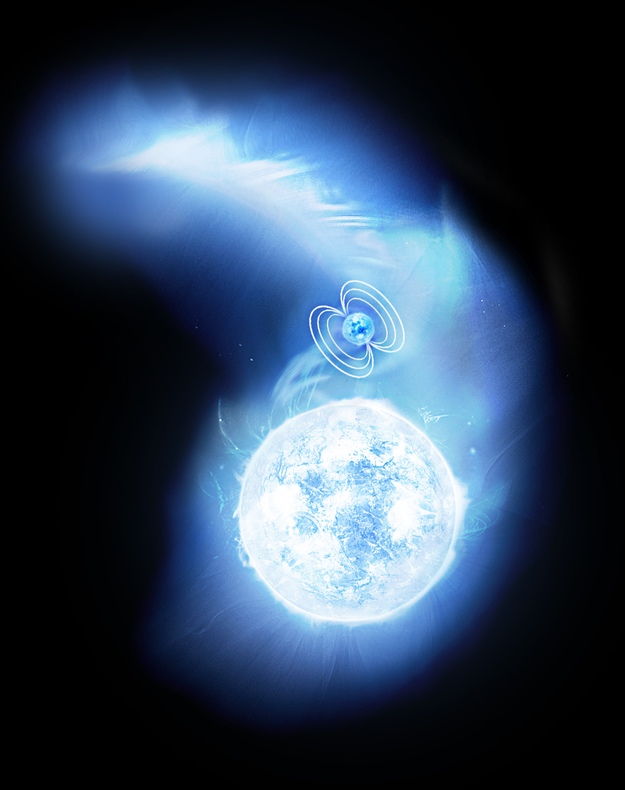
Observations with NOEMA, funded by the ORP TA, have for the first time, detected a neutron star high mass X-ray binary at mm wavelengths. This result paves the way for a new approach to understand the role of the stellar winds in regulating accretion regimes in a range of binary systems.
Neutron stars in compact orbits around massive stars accrete from the stellar wind of their companion, powering energetic high-energy emission and the launch of relativistic jets. Amongst the Galactic sample of these binaries, several sub-classes display widely different accretion behaviour: some actively accrete during brief outbursts separated by long periods of inactivity, others accrete at low levels interspersed irregularly by short flares of accretion, while a final class is always bright and active. The former of those three categories is easily explained by the stellar type of their Be-type donor star; puzzlingly, however, the latter two classes share very similar massive companions. What may explain their different accretion activity?
One hypothesis lies in a suggested, but never clearly shown, systematic difference between the winds of their donors: their velocities, mass loss rates, and clumpiness. In this pilot experiment, we used NOEMA observations to probe the outer regions of the stellar wind in two of these binaries, aiming to measure the wind characteristics. Our detection of one source (and non-detection of the other), highlights that modern mm facilities are now sensitive enough to perform such studies. We furthermore derive how a combination of mm and X-ray measurements – probing the accretion flow can – further disentangle the stellar wind properties. Importantly, this pilot sets the stage for larger and more ambitious campaigns to systematically compare stellar winds between accreting binaries.
Image: © ESA/AOES Medialab; Caption: ‘Artist impression of a neutron star accreting from the wind of a massive companion star